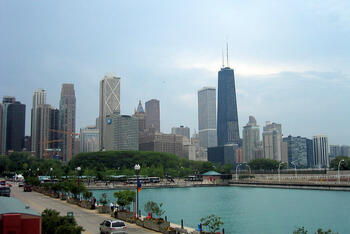
The Census Bureau recently released data on domestic migration that took place during the COVID-19 pandemic, and their findings were heavily covered in the press with headlines such as “Cities Lost Population in 2021” and “The pandemic city exodus revealed: New York, Los Angeles, San Francisco and Chicago lost the most residents.” While deaths from the virus itself was absolutely a factor in the decline, the fact of the matter is that tens of thousands of residents moved away from some of the nation’s biggest, most densely populated, and costly metropolitan areas. Metropolitan Los Angeles, for instance, lost almost 176,000 residents. The San Francisco region saw a loss of more than 116,000 residents. Greater Chicago lost more than 91,000 people from 2020 to 2021, and the San Jose, Boston, Miami, and Washington metro regions each lost tens of thousands of residents, primarily from people moving away as well. So the question is, then, whether or not these cities will reclaim residents as the nation returns to some sense of pre-pandemic normalcy.
While demographers like William Frey believe that population decreases in the biggest metro areas will be temporary and that “we will go back to normal” in metros like New York, Los Angeles, and Chicago as offices re-open, most reporting on these census data have overlooked a key fact about American life in the COVID era: Americans are no longer interested in living in big, dense cities.
Survey data collected by the Survey Center on American Life throughout the COVID-19 pandemic reveal that those big cities — despite the values of propinquity, density, and scale — are simply not where most Americans want to reside. Even younger generations of Americans — those who traditionally flocked to big cities for careers, social lives, and cultural amenities — actually show greater interest in suburban living than dense city living.
Indeed, after being homebound for many months due to the pandemic, more Americans now express a desire for personal space than ever before. The majority of Americans today are willing to sacrifice easy access to amenities to have more space to themselves and distance from their neighbors, and city life is simply not where those desires are realized. Perhaps driven by idealized visions of rural life — small, tight-knit communities that move at a more leisurely pace — many Americans express a preference for small-town life. Roughly four in 10 Americans say they would prefer living in a town (15 percent) or rural area (27 percent). In contrast, only 9 percent say they would prefer to live in a large city. More Americans now state that they would prefer living in a small city (16 percent), while one in three Americans prefer the suburbs (33 percent).
Unsurprisingly, the cities that have recovered fastest from COVID-19 — Denver, Charlotte, Nashville, and Dallas — are themselves overwhelmingly suburban. And these realities fit well with the data from a Los Angeles Times/Reality Check Insights national poll, which was taken after the November 2020 election in the midst of the COVID-19 pandemic. The Los Angeles Times poll found that when residents of big cities were asked about the ideal setting of their next home, a majority of big city dwellers said something other than their current situation. Just 44 percent would pick a big city once again, with significant numbers preferring a small city (9 percent), rural areas and towns (17 percent), or the suburbs (25 percent). Small cities did not fare much better either; only 38 percent of small city dwellers claim that their ideal location is another small city.
Read the rest of this piece at AEI.
Samuel J. Abrams is a professor of politics at Sarah Lawrence College and a nonresident senior fellow at the American Enterprise Institute.
Photo: Wally Gobetz via Flickr under CC 2.0 License.












